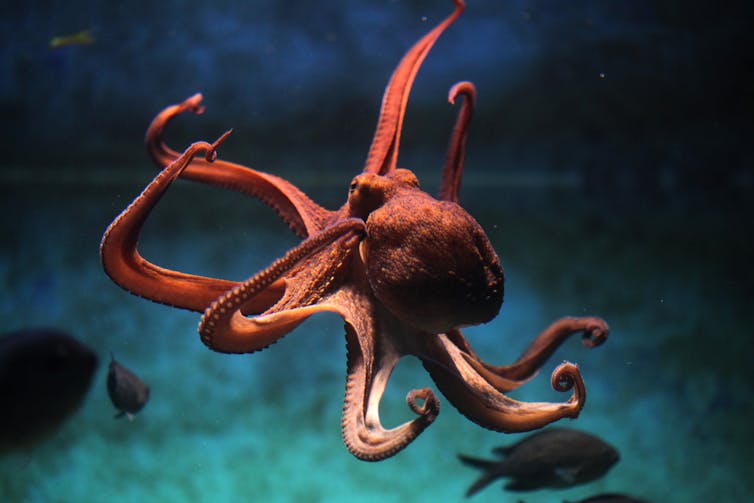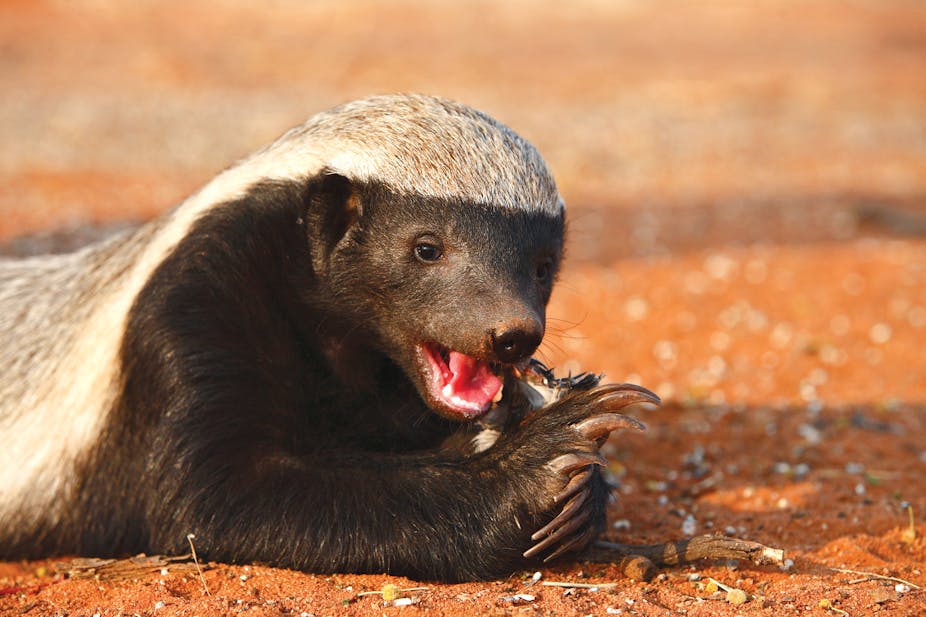“What’s that, Lassie? Timmy has fallen down the well?” Lassie was the clever dog that always used to save the day, but stories of clever pets such as skateboarding dogs are well known. It is also widely acknowledged that animals such as monkeys, apes, whales and dolphins are extremely intelligent, but how do we actually define “clever”?
Clever can mean anything from a camouflaged chameleon to an ape using sign language or even employing “sacred rituals”, but clever usually refers to a behaviour rather than a physical appearance.

So, how do clever behaviours arise? Conditioning is a learning process whereby an organism undertakes a behaviour in response to a stimulus. Classical conditioning, such as that expressed by Pavlov’s dogs, is where a neutral stimulus (in this case a bell) is presented with a potent stimulus (food) to stimulate a reflex reaction (salivation). Over time, the neutral stimulus alone stimulates the reaction, thus Pavlov’s dogs eventually salivated whenever they heard the bell ring, whether food followed or not. Indeed, my friend inadvertently conditioned her dog to salivate when he heard the closing Neighbours theme tune – great when she watched it at dinner time, but not so good when she tuned into a rogue episode in the middle of the day.
Trial and error
Operant conditioning, meanwhile, is where a behaviour is modified by its consequences, and animals learn through trial and error. Imagine some hungry chimpanzees trying to poke termites out of their mound. If one chimp happens to be holding a twig while poking around, it might be small enough to fit into the mound and get covered in termites. If the chimp then pulls the twig out of the mound and eats the termites it has a competitive advantage over the other chimps as it is no longer hungry. If the chimp then learns to associate the implementation of the twig with the increased foraging ability, operant conditioning has occurred.

Both classical and operant conditioning are commonly used to train organisms, but it is operant conditioning, the trial and error learning, that typically occurs in the wild. Natural selection (the survival of the fittest) is where only those that display optimal behaviours will survive long enough to reproduce and pass on their genes (and hence their cleverness). So, the occurrence of clever behaviours, such as tool use, is a combination of trial and error, and evolution.
Humans like to think of themselves as the most intelligent organisms on the planet, so we are always surprised when animals appear clever and often outwit us. But beyond the usual roll call of apes and dolphins, here are some more that are surprisingly clever…
Super squirrels
Most animals will do anything for food – for them it is simply a case of eat or die. So it is no surprise that they have learned ingenious ways to access food, such as the squirrels completing the assault course that featured in the Carling Black Label adverts.
In fact, squirrels, who hide many nuts each autumn, and thus have evolved a high memory capacity to relocate them, have more recently been found to be able to solve complex puzzles whereby they learned that if a hollow contained a reward, another reward would be located in the hollow diagonally opposite. Clever stuff.
Bright birds
Some species of heron are known for their clever foraging behaviours – they use bait, such as a leaf or piece of bread placed several times on the surface of a water body, to attract fish (akin to a fisherman casting off many times). And once the fish investigate, the heron take aim.
Crows are known to use reasoning to solve problems, but recently they have been taught to exchange collected coins for food in a “vending machine”. Although the Crow Machine project is aimed at investigating training in crows, it is thought that it could lead to the learning of other tasks in crows such as collecting rubbish or even search and rescue. Either way, there are some surprisingly bright birds.
Intelligent invertebrates
The octopus is perhaps the most intelligent of the invertebrates, known to recognise many shapes and patterns. It has also been found to learn through observation rather than just trial and error. For example, when a naïve octopus was placed within sight of another octopus that had learned (through trial and error) how to open a puzzle box to obtain food, the naïve octopus was able to obtain the food reward in the same way – it had learned from another.
…and the ‘Houdini’ honey badger
The honey badger is native to Africa and, although it eats a variety of food including meat and fruit, it favours honey that it is able to extract from beehives using its formidable claws. It is a remarkably tough – it will take on everything from snakes to lions – and the resourceful creature has also been known to use tools in the wild to obtain food. But the incredible footage of Stoffel the captive-bred honey badger at Moholoholo Wildlife Rehabilitation Centre shows the astonishingly clever tool-use and behaviours he used to escape countless times from his enclosure. No wonder he was dubbed a “Houdini”.
So, it would appear that many animals are indeed surprisingly clever. One day, they might even outwit us…

